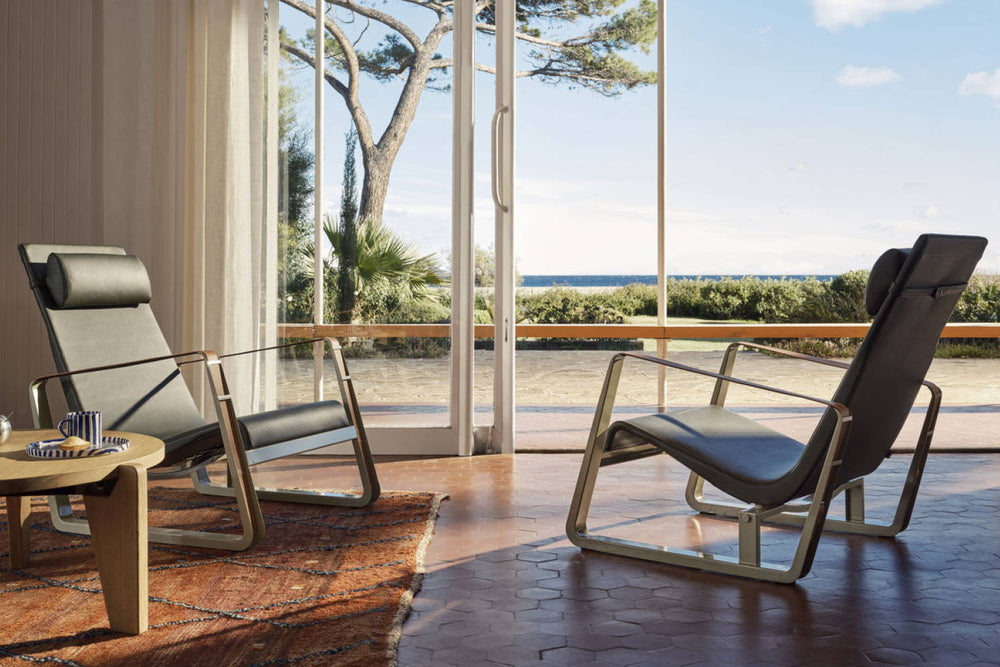Clean lines, fine craftsmanship, and simple silhouettes are discerning factors of both styles, but unique design and material choice differences set these two timeless aesthetics apart.
Scandinavian Design, What Is It?
A design style hailing from the Nordic region of europe, Scandinavian design is characterized by a minimalist, clean-lined approach that looks to combine functionality with beauty. A long list of influential designers helped inspire the movement, each bringing a fresh perspective to the overall aesthetic. With an emphasis being put on utilizing natural materials to improve daily life through unique, purposeful design, durability, reliability, and functionality also play a key role in this style.
Scandinavian Design History
Emerging as early as the 1930s from the five major Nordic countries of Denmark, Finland, Norway, Sweden, and Iceland, Scandinavian design continued to flourish in the mid 1950s and beyond. Influenced by the German Bauhaus school, many designers combined ideas of simplicity and functionalism with innovative materials and construction methods to form influential and iconic designs that are still sought after to this day. By no means limited to furniture and decor, Scandinavian design has been applied to architectural principles for modern homes.
Scandinavian Design Tips
MINIMIZE: With an emphasis on bright, light, and open spaces, ensure you have plenty of room to move around with just the right amount of furniture, mindfully balanced with accentuating decor.
QUALITY OVER QUANTITY: In keeping with the tradition of Scandi craftsmanship, always select well-made, multipurpose, or practical pieces to build your space for a lasting design.
CURATE CONTRAST: Not just referring to opposite ends of the color spectrum, design elements such as shape, size, and texture all play a part in crafting a Nordic-forward living space.
HEALING HYGGE: The Danish word for “cozy togetherness”, selecting pieces that inspire warmth and comfort will make your space feel cozy and inviting, creating the ideal gathering spot.
Mid-Century Modern Design, What Is It?
Mid-century modern design is an interior design and furniture style that originated at the turn of the 20th century and is characterized by open interiors, clean lines, geometric shapes, low profiles, and natural materials. Heavily influenced by the Bauhaus movement, the mid-century design approach combines elements of functionality with use of both organic and geometric forms paired with pops of color. With many iconic furniture designs stemming from this era, the mid-century modern aesthetic continues to be an incredibly popular interior design choice to this day.
Mid-Century Modern Design History
Describing design styles from the mid-20th century – roughly 1933 to 1965, the term Mid-century modern most frequently refers to architecture and furniture design. Born during the industrial revolution, the term was eventually coined by art historian Cara Greenberg in 1985 to describe furniture that was prominent in the post World War II era. Often cited as the first memorable design of the genre, George Nelson’s 1946 Platform Bench was elegant, carefree, and designed to be mass-produced. Able to transcend decades and stand the test of time thanks to its ingenious simplicity and sculptural elements, mid-century modern style remains an iconic and instantly recognizable design aesthetic. .
Mid-Century Modern Design Tips
EASY DOES IT: Smooth, curved angles and clean lines are key when selecting furniture pieces for a mid-century modern space. Low-profile seating and angular legs are key attributes in many designs.
NO FRILLS: You’ll rarely find fancy ornamentation or upholstery here. Quality materials like solid wood, fiberglass, metal, and stone are all utilized to create high-quality designs with simple fabrics and leather being the choice du jour.
BE BOLD: Don’t shy away from color when designing your space. Pick one or two bold tones that are pops of color in isolated spots and let the symmetry of the rest of the space balance things out.
LUXE LIGHTING: Mid-century modern lighting often features rounded exteriors and geometric shapes that provide eye-catching contrast and a statement-making focal point for a room. Opt for a neutral colored shade or use a lamp to bring in a pop of unexpected color.
What's the Difference?
While both design styles are influenced by their era, there are unique differences in use of color, shape, and material that set them apart.
At their core, both Scandinavian and mid-century modern designs are focused on comfortable pieces that focus on simplicity, functionality, and subtle hints of color. Mid-century modern style introduces more man-made materials and innovative technological processes, whereas Scandinavian design tends to favor natural materials.
Similarly to Scandinavian design, mid-century modern style also relies on the principle of minimal decorative ornamentation and functional pieces that reduce clutter, resulting in two aesthetics that are fresh, inviting, and totally customizable to your taste.





